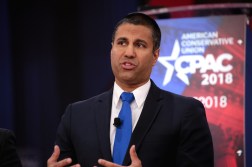National broadband coverage grossly over-represented by FCC data, says non-profit

High speed internet availability appears far less prevalent than what federal statistics and the country’s telecommunications companies suggest, according to a report released Wednesday by an advocacy group.
In particular, researchers for the group found that while multiple providers may have a footprint in a given market, in a many cases, there is little or no competition at all to spur improvements in service.
In a report published by the nonprofit the Institute for Local Self-Reliance, researchers use the city of Rochester, Minnesota, to illustrate their argument that the Federal Communications Commission’s methods of collecting and publishing data on broadband availability lean toward propping up regional monopolies and duopolies at the expense of consumers.
Federal statistics cited in the report indicate that there are 19 broadband providers in Rochester, a number that would indicate a high level of market competition. But researchers found that not a single location has access to 19 providers, and in a majority of the city’s geography, there is no competition at all.
Christopher Mitchell, director of the group’s broadband initiative and co-author of the report, told EdScoop affiliate StateScoop , the same story can be found in communities across the country, not just in Rochester, a city of 114,000 residents located in southeastern Minnesota.
“The main takeaway is that some elected leaders have been fooled by aggregate statistics in broadband deployment,” Mitchell said. “We did the paper to demonstrate how statistics can be abused.”
The report shows that about 19,000 Rochester residents only have access to broadband services through Charter Communications, and about 42,000 people don’t have access to a wireline broadband provider at all. According to the FCC, everyone in Rochester has broadband access because the agency lumps in slower, more expensive wireless services with wireline providers.
As huge gaps in broadband availability have persisted in Rochester, FCC statistics have provided politicians with misinformation, the researchers said. The local government basically gets a “convenient excuse” not to act, Mitchell said.
The main offender is the FCC’s broadband availability collection process, according to the researchers. Every six months, internet service providers are required to submit a document called Form 477 to the agency, showing where they provide service, census block by census block. But census blocks can be big, particularly in rural areas, and the FCC defines access in a way that does not reflect reality for most consumers, the researchers said.
If, for example, just one household has access to Comcast internet service within a given census block, and just one other household has access to CenturyLink in that same census block, then statistically all households in that census block are defined as having access to two broadband providers, even if the truth is that they don’t have access to any providers at all.
Large telecommunications companies are taking advantage of this system, the researchers said.
“Large, de facto monopoly providers have incentives to overstate their coverage and territory to hide the unreliable and slow nature of their service in many communities,” according to the report.




